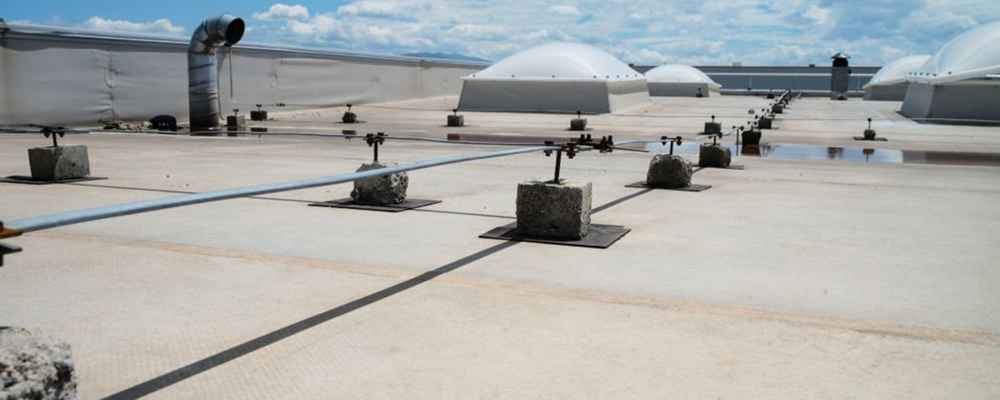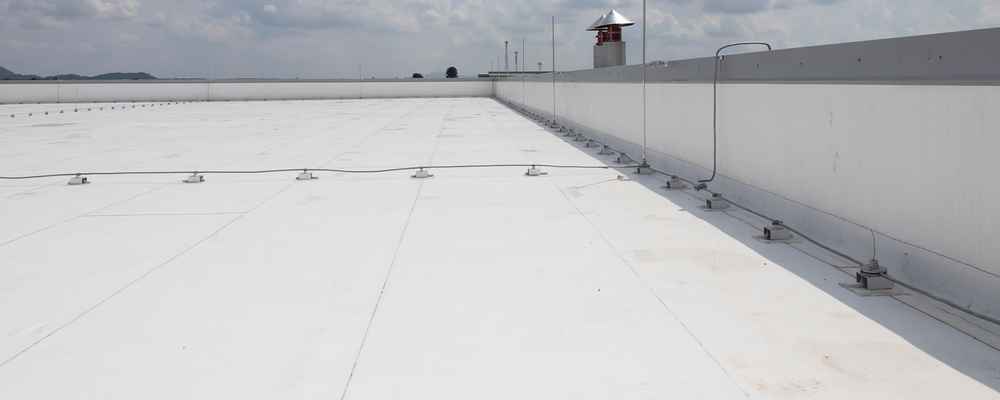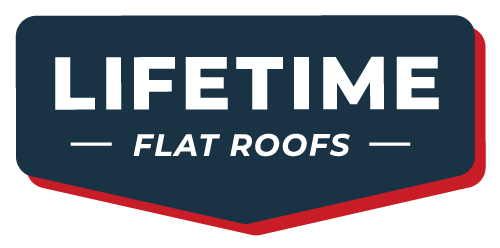Flat roofs have been around for centuries, yet many homeowners and business owners still have misconceptions about them. Whether you’re considering a flat roofing system for your property or just want to know more, understanding the facts about flat roofs can help you make informed decisions.
From their durability to their energy efficiency, let’s explore what makes flat roofs a smart and reliable choice.

1. Flat Roofs Aren’t Actually Flat
One of the biggest misconceptions about flat roofs is that they are completely level. In reality, flat roofs have a slight slope—usually between 1/4 and 1/2 inch per foot. This small incline is essential for proper drainage, ensuring water flows toward drains or scuppers instead of pooling on the surface.
2. Flat Roofs Are More Common Than You Think
While pitched roofs dominate in suburban homes, flat roofing systems are incredibly popular in commercial buildings, modern homes, and industrial facilities. Their clean, minimalist design makes them a favorite for contemporary architecture.
3. Flat Roofs Can Be Just as Durable as Pitched Roofs
A common myth is that flat roofs don’t last as long as pitched roofs. The truth is that with proper materials and maintenance, flat roofing systems can last 25 to 50 years or more. Some of the longest-lasting materials include:
- EPDM (rubber roofing): 25-50 years
- TPO (thermoplastic roofing): 20-30 years
- PVC roofing: 25-35 years
- Modified bitumen roofing: 20-30 years
Factors like installation quality, weather exposure, and upkeep play a huge role in flat roof lifespan.
4. Flat Roofs Are Energy-Efficient
Did you know a flat roof can help lower your energy bills? Many modern flat roofing materials come with reflective coatings that reduce heat absorption. This means your building stays cooler in the summer, reducing the need for air conditioning.
According to the U.S. Department of Energy, cool roofing materials can significantly reduce energy consumption, making flat roofs a great option for sustainability.
5. Flat Roofs Are More Affordable Than Pitched Roofs
Because they require fewer materials and less labor, flat roofs are generally more cost-effective to install than traditional sloped roofs. Additionally, they offer easier access for repairs, inspections, and maintenance, saving you money over time.
6. Flat Roofs Require Proper Drainage Systems
Since flat roofs don’t naturally shed water like sloped roofs, having an efficient drainage system is crucial. This can include:
- Interior drains (like those in parking garages)
- Scuppers (outlets that direct water off the roof)
- Gutters and downspouts
Regular maintenance of these drainage systems prevents water damage and leaks.
7. Flat Roofs Can Support Extra Features Like Green Roofs & Solar Panels
A major benefit of flat roofs is their versatility. They can support:
✔ Green roofs – Flat roofs can be transformed into rooftop gardens, reducing stormwater runoff and improving insulation.
✔ Solar panels – Because flat roofs have a large, open space, they are perfect for solar panel installation, making them an excellent choice for eco-conscious homeowners and businesses.
✔ Rooftop patios – Some homeowners turn their flat roofs into outdoor living spaces, adding decks or seating areas.
For more information on the benefits of green roofs, check out the Environmental Protection Agency (EPA), which outlines their environmental impact.
8. Flat Roofs Are Extremely Strong
People often assume that flat roofs are weaker than sloped roofs, but that’s not true. Flat roofing materials are designed to withstand heavy snow loads, high winds, and extreme weather. In some areas, flat roofs are even better at withstanding hurricanes because they offer less wind resistance compared to steep-pitched roofs.
9. Flat Roofs Need Regular Maintenance
While flat roofs are durable, they do require routine maintenance to maximize their lifespan. Key maintenance steps include:
✔ Cleaning debris from the roof and drains
✔ Inspecting for cracks, blisters, or pooling water
✔ Resealing seams and flashing as needed
Professional inspections twice a year (spring and fall) can help prevent costly repairs.

10. Flat Roof Leaks Are Preventable
A common fear is that flat roofs leak more than pitched roofs. While water drainage is important, proper installation and maintenance prevent leaks. Some ways to protect your flat roof from leaks include:
- Using high-quality waterproofing membranes
- Ensuring proper drainage
- Applying reflective coatings to reduce weathering
- Sealing seams and flashing properly
If leaks do occur, they are usually easier and less expensive to repair than those on sloped roofs.
11. Flat Roofs Offer Better Space Utilization
Unlike pitched roofs that create unusable attic space, flat roofs maximize interior space. This makes them ideal for:
✔ Commercial buildings that need additional storage
✔ Apartments and condos with rooftop common areas
✔ Homes that require extra indoor living space
12. Modern Flat Roofing Materials Are Highly Advanced
Years ago, flat roofs had a reputation for being high-maintenance, but today’s materials have revolutionized durability and efficiency.
For example:
- TPO and PVC roofing resist chemicals, UV rays, and extreme weather.
- EPDM roofing is extremely flexible and can last up to 50 years.
- Modified bitumen roofing is reinforced with polyester or fiberglass for extra strength.
Thinking About a Flat Roof? Get a Free Inspection Now!
Now that you know these facts about flat roofs, you can see why they’re a great choice for homes and businesses alike. If you’re considering a new flat roof installation, repairs, or maintenance, our team at Lifetime Flat Roofs is here to help. Get a free inspection now and let our experts ensure your roof stays strong and reliable.

